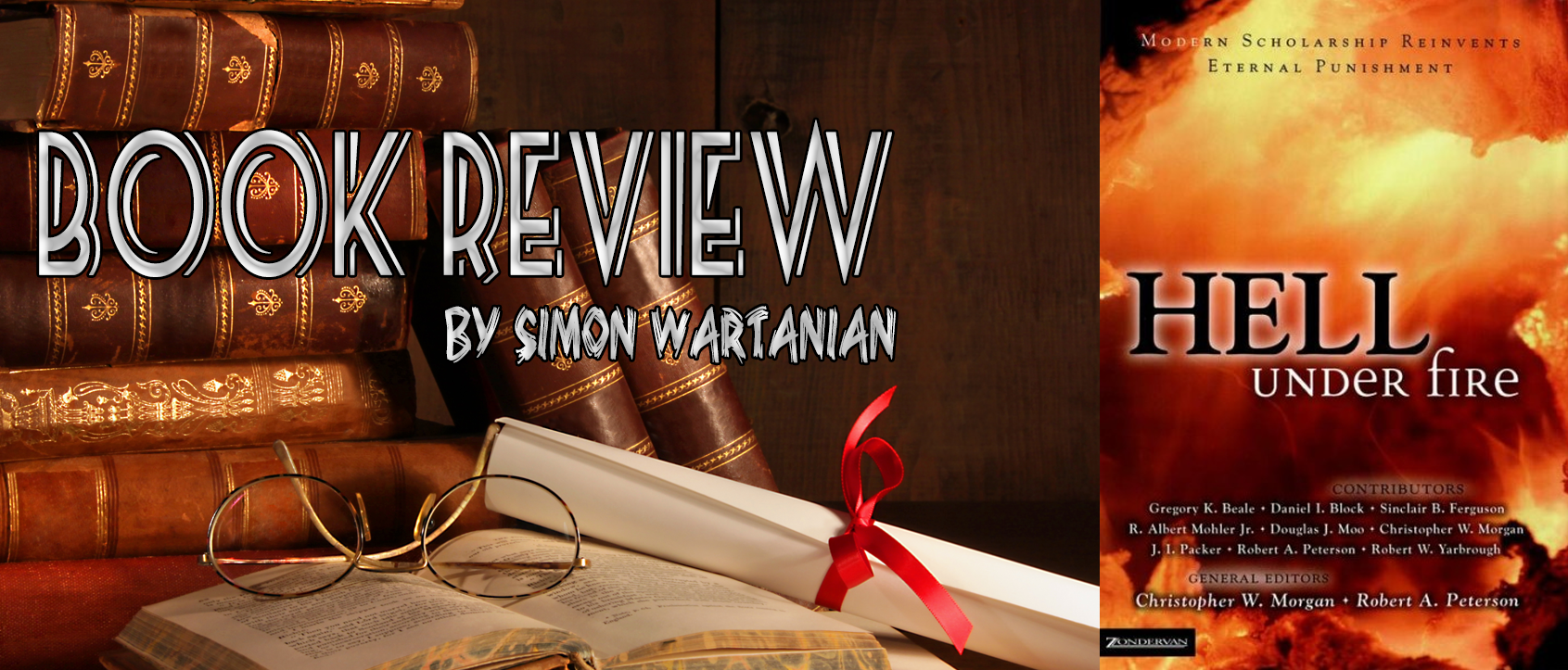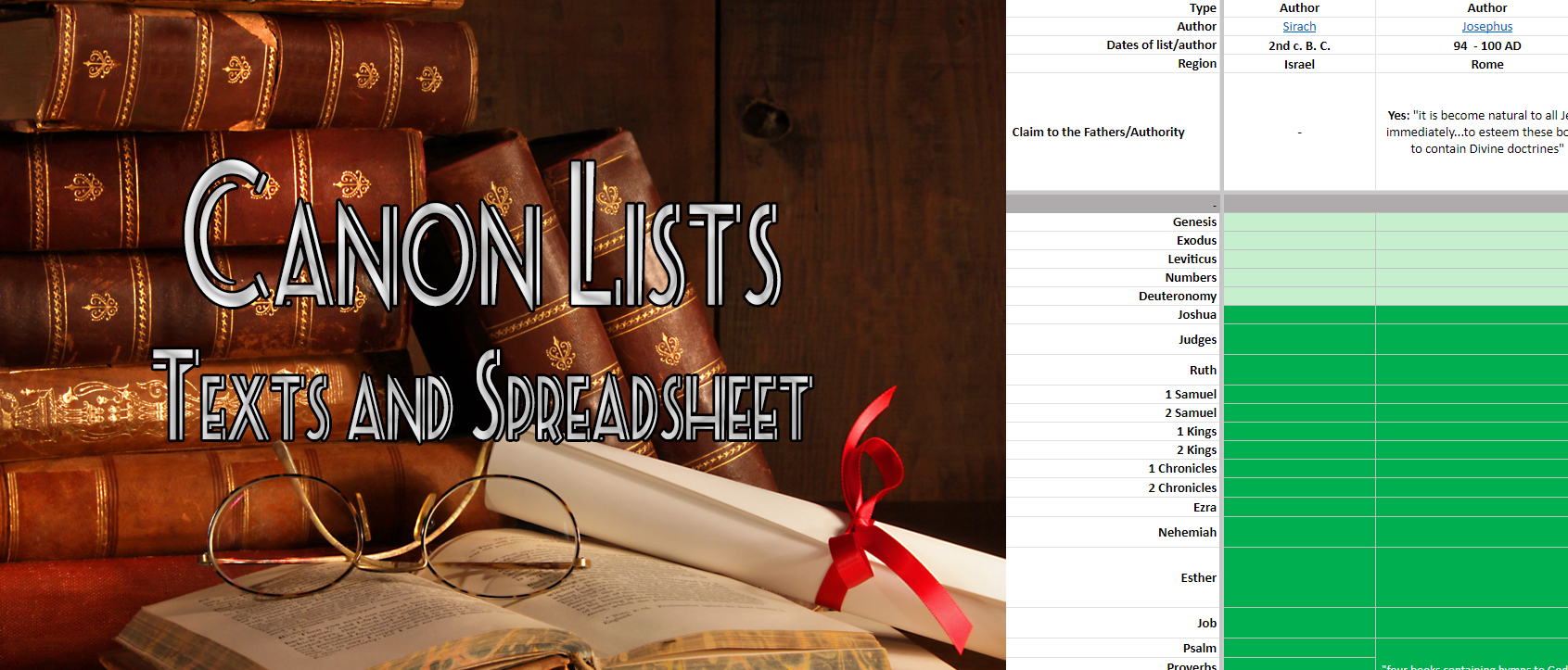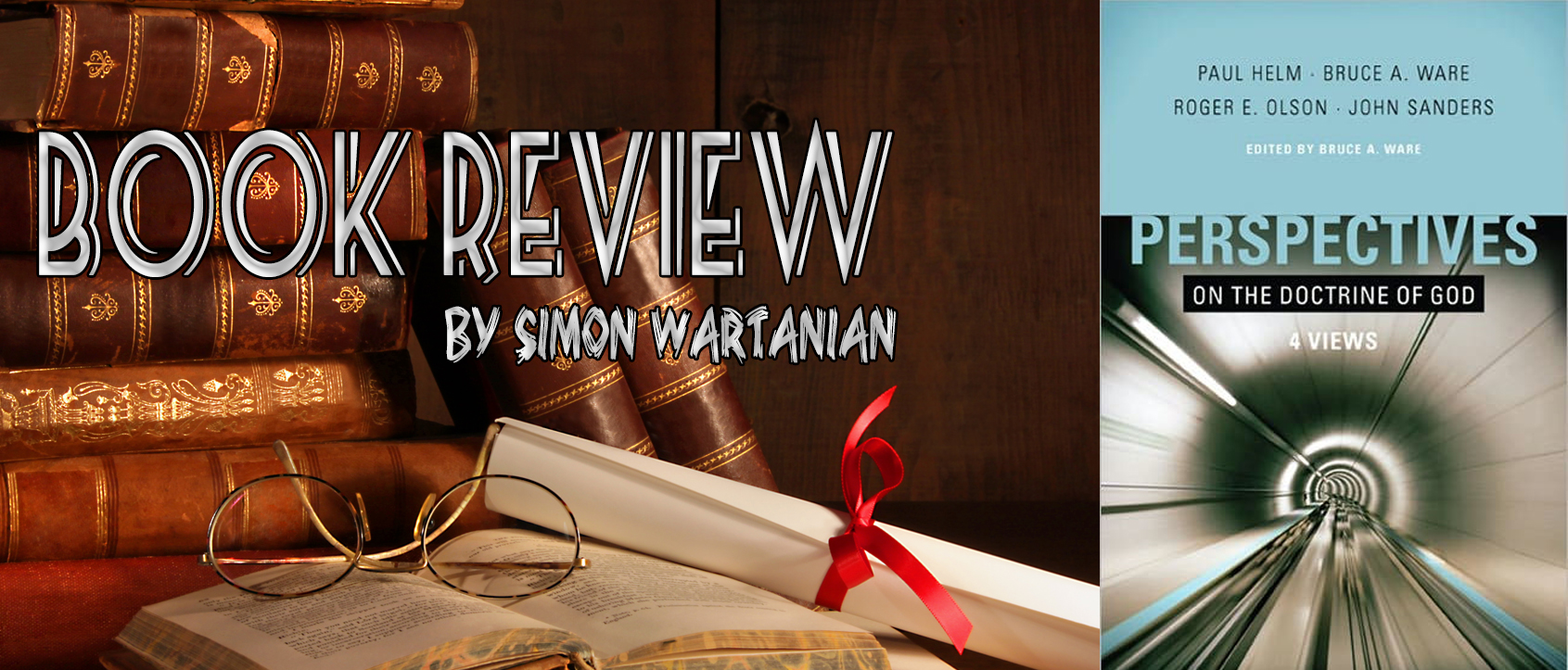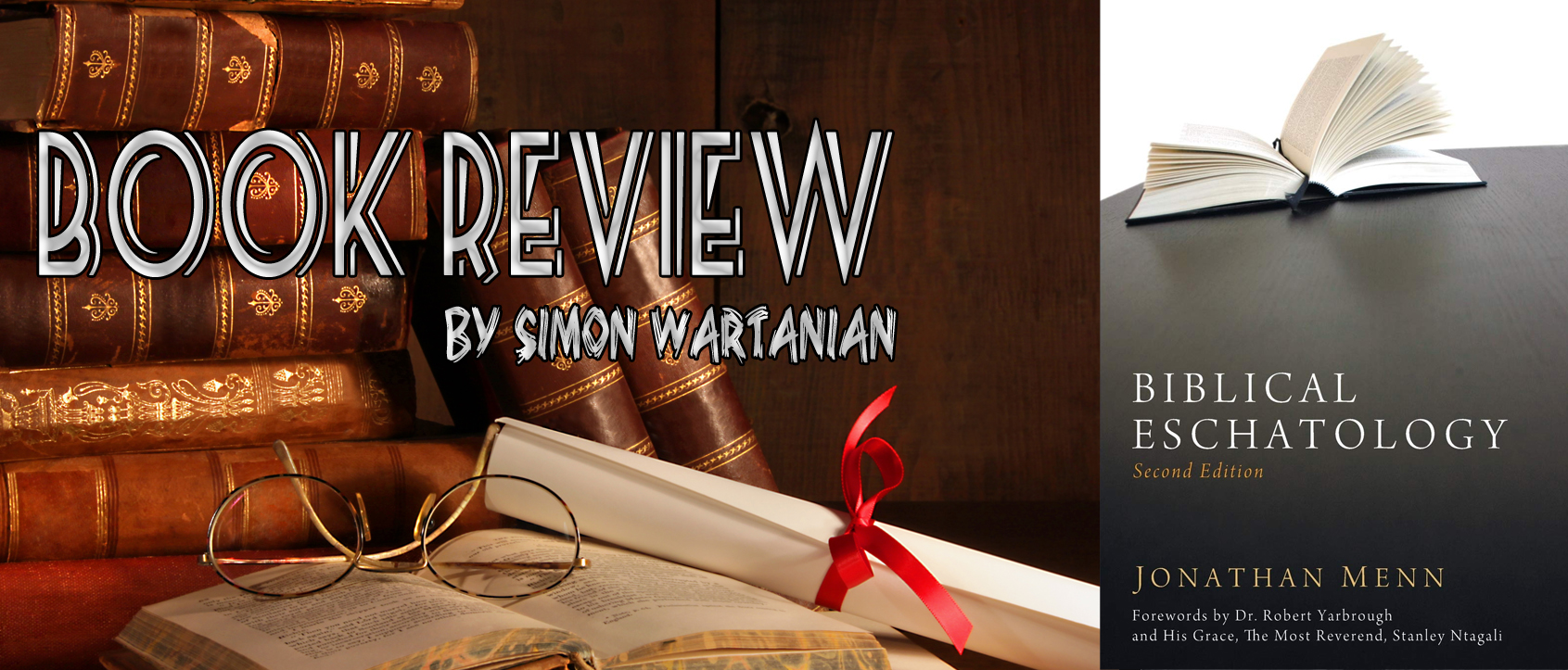Hell Under Fire:
Modern Scholarship Reinvents Eternal Punishment
By Christopher W. Morgan & Robert A. Peterson
Hell Under Fire: Modern Scholarship Reinvents Eternal Punishment. Ed. by Christopher W. Morgan, Robert A. Peterson. (Grand Rapids, MI: Zondervan, 2004).
Had this book sitting on my shelf for a while and thought that it would merely be an academic book and a dry read. I couldn't be more wrong. Surely it was academic, but never on a level that made it impossible for an average Bible student to understand.
The Book and Its Content
The authors are top-notch theologians in our day who in this book respond to Annihilationism and Universalism, while at the same time give a biblical and holistic picture of hell. The subject of hell is sobering and terrifying. As believers we know that thanks to Christ we have been saved from this awful fate, which we should recognize--we rightly deserve. We likewise believe that all those without the Gospel of Christ, do not have a hope, are under the wrath of God and will everlastingly be under the wrath of God. It is terrifying to think of that and we cannot, without sympathy, discard the emotional appeal of Universalists and Annihilationists. The Bible is the sole infallible and highest authority for the Christian and if the Bible teaches that historical view of hell, then my emotions do not matter and cannot settle the truth about hell. It is as simple as that.
This book contains 10 chapters dealing, containing among other things,
- a historical survey about hell up to our day (chapter 1, by Albert Mohler Jr.);
- the OT and hell (chapter 2, by Daniel I. Block);
- the Lord Jesus and Hell (chapter 3, by Robert W. Yarbough);
- Paul and Hell (Chapter 4, by Douglas J. Moo);
- the Apocalypse and Hell (chapter 5, by G. K. Beale);
- Biblical and Systematic Theology as it relates to hell (chapters 7-8, by Christopher W. Morgan and Robert A. Peterson, respectively);
- an examination of Universalism and its arguments (chapter 8, by J. I. Packer);
- an examination of Annihilationism and its arguments (chapter 9, by Christopher W. Morgan); and finally
- Hell and pastoral theology (chapter 10, by Sinclair Ferguson).
There is a ton to be learned in these chapters by the Bible student. What is to be learned from this book should not only fill our heads with information, but motivate us to share the Gospel with the lost because of the dreadful fate which faces them if they receive not Christ and His righteousness.
The reason we believe in the existence and everlasting nature of hell and of its punishment is simply because we believe that Holy Writ teaches it. If it were not for the words of the Lord Jesus Christ Himself, who spoke more often about hell than Heaven, we would not believe in Hell, because it is so repugnant to our fallen natures.
Interaction
This work continually interacts with popular scholarship as it regards the nature of hell and the arguments for and against Annihilationism in Evangelicalism. Authors most cited and interacted with include John Stott, Clark Pinnock, David Powys and Edward W. Fudge. The authors of this work continually argue that Annihilationists do not look at the whole portrayal of hell as presented by Scripture, but rather choose to focus on and emphasize specific portrayals of hell with neglect to the rest. This accusation is also leveled against those who hold to the traditional view of Hell who emphasize the punishment aspect of hell, while neglecting to share the Gospel, or declaring that hell is also a banishment (not merely a separation of God's presence) and destruction.
The Destruction Picture of Hell
An important and helpful study was Douglas J. Moo's on the meaning of destruction. He accuses Annihilationists of reading their preconceived meaning of destruction as cessation of existence or as "annihilation" rather than deriving its meaning from the whole of Scripture. He shows how it is better and more consistent with the total picture of hell in the Bible to understand the usage of words like destruction to mean "ruin" (p. 106) and "they [the two Greek word groups olethros and apolymi/apoleia] usually refer to the situation of a person or object that has lost the essence of its nature or function" (p. 105), rather than cessation of being. In order to establish this he cites examples where the word group of destruction is used without implying cessation of existence. For example:
land that has lost its fruitfulness (olethros in Ezek. 6:14; 14:16); to ointment that is poured out wastefully and to no apparent purpose (apoleia in matt. 26:8; Mark 14:4); to wineskins that can no longer function because they have holes in them (appollymi in Matt. 9:17; Mark 2:22; Luke 5:37); to coin that is useless because it is “lost” (apollymi in Luke 15:9); or to the entire world that “perishes,” as an inhabited world, in the Flood (2 Pet. 3:6). In none of these cases do the objects cease to exist; they cease to be useful or to exist in their original, intended state. In other words, these key terms appear to be used in general much like we use the world “destroy” in the sentence, “The tornado destroyed the house.” The component parts of that house did not cease to exist, but the entity “house,” a structure that provides shelter for human beings, ceased to exist. (p. 105)
While the rhetoric of Annihilationism is strong when using their preconceived ideas of destruction, they fail when examined in light of Scripture and when Scripture is compared to Scripture.
The Apocalypse and Hell
Revelation 14:9-11; 20:10-15 are arguably some of the clearest passages on the eternality of hell and of its punishment. G.K. Beale, who is recognized as the author of one of the best commentaries on Revelation, deals in detail with these passages while interacting fairly and respectfully with the other side.
He shows how the eternality of hell is parallel with the eternality of heaven. Notice how in Revelation 14:11 the torments of the lost who are said to “have no rest, day or night” are side by side with the bliss of the saints who are said to have “rest from their labors” in Revelation 14:13. Notice also the close parallel between Revelation 14:11 and 20:10. Dr. Beale lays a great stress on this and rightfully so. The worshipers of the beast, the reprobate, will meet the same fate as their lord, the unholy trinity: Satan, the beast and false prophet. Dr. Beale writes, ‘the temporal expression “day and night” (hemeras kai nyktos) clearly refers to ceaseless activity that endures for eternity in 20:10, but the identical sense is strongly implied in 7:15 and 4:8. In 7:15 the clause alludes to the worship of the whole congregation of saints in God's temple in the new creation at the end of the age...Such worship and relief will continue forever” (p. 118).
The parallel between the fate of the wicked and the righteous is also present in the fact that while the righteous “will reign forever and ever” (Rev 22:5), on the other hand, “the smoke of their torment goes up forever and ever” (Rev 14:11). Notice that Scripture says that the smoke of their torment, not destruction goes up forever and ever. The expression “forever and ever” is identical for both the righteous as well as the wicked. Torment or punishment by definition implies consciousness. We do not torment or punish a car or a rock; but we do punish criminals. Therefore, “It still remains true that Revelation 14:11 and 20:10-15 are the Achilles’ heel of the annihilationist perspective” (p. 134).
Much more could be said about this chapter, but my advice is to simply pick up the book and read this chapter. It is mind-opening and very helpful.
Summary
I loved the respectful tone of the authors and their respectful and fair interaction with the other side. I enjoyed their fair and honest handling of the Scriptures. I loved the fact that the authors frequently referred back to earlier portions of the book, which tells me that the editor did a great job at putting the book together. Sometimes they even cite earlier portions. Much could be learned from this book, from both its theological as well as pastoral tone, and I will no doubt return and look up the arguments and the texts again. Lord willing, I will try to update my commentary on chapter 32 of the 1689 sometime in the future with the insights I've gained from this work.
My final advice is: tolle lege!
© 2017 by Simon Wartanian




